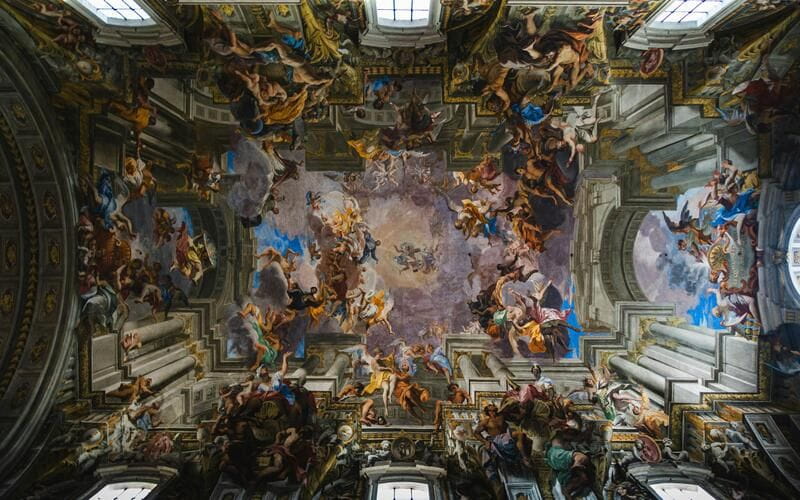With a rich and riveting history, Italy has made splendid contributions in the fields of art, architecture, and ancient civilizations. From the breathtaking splendour of the Roman Empire to the artistic genius of the Renaissance, Italy has influenced world history. Visitors from all over the world come to see the ancient ruins and magnificent cathedrals and museums. If meandering the historic streets of Rome, watching the art unfold in Florence, or romantic moments splashed along the canals of Venice is your dream, then Italy takes you on an unparalleled journey through time. To maximize this experience, many travellers often opt for Italy tour packages concerning the leading icons of the country.

Getting an Italy visa is the steps to be undertaken for any international traveler keen on tracing the country’s historical wonders. Italy has some of the most visited tourist attractions in the world, including the Colosseum, the Leaning Tower of Pisa, and Vatican City. Each region in Italy has its historical significance, making it a paradise for all history lovers. Whether drawn by the mighty legacies of Roman emperors or the mesmeric artistic genius of Michelangelo and Leonardo da Vinci, Italy serves all walks of travelers. Tourists can enrich their ancient exploration of Italy with modern comforts through a myriad of Italy holiday packages.
Here are some of the rich histories of Italy: Land of Art, Architecture & Empires.

1. Chronicles of Ancient Italy and the Rise of Rome
Essentially, the history of Italy begins with the early civilization of Etruscans in central Italy about the 8th century BCE. They had city-building capabilities, religious beliefs, and artistic traditions; however, it was mainly the rise of Rome which played an important role in transforming ancient Italy.
As the story goes, in 753 BCE, Rome started as a tiny settlement beside the Tiber River, which eventually grew up to become one of the foremost empires in the history of the world. As the Roman Republic (509-27 BCE) imposed a strong political and military organization, its influence spread across the Mediterranean. By the time of the Roman Empire (27 BCE-476 CE), Rome had established this extensive dominion ranging from Britain to North Africa and the Middle East.
Life in Rome was perhaps governed by architecture, engineering, and law. The Romans built roads, aqueducts, amphitheaters, and temples that still stand intact today. These include the Colosseum, the Pantheon, and the Forum Romanum-that attest to the architectural brilliance of Rome. Besides, Roman law has formed the basis for various legal systems in force today.
2. Decline of Rome and the Middle Ages
The Roman Empire was disintegrated by internal corruption, economic malaise, and attacks by external enemies. In 476 CE, the Western half of the Roman Empire fell with the deposition of Emperor Romulus Augustulus by the Germanic leader Odoacer. The Eastern half, the Byzantine Empire, continued for almost a thousand years.
During the Middle Ages, most of Italy became the divided territories of kingdoms and city-states. The Papal States gained political and religious influence under the pope. Other states, like the Kingdom of Sicily and the Republic of Venice, grew prosperous. The political instability did not destroy Italian cities, which remained eminent in commerce, trade, and culture. Monasteries were there to preserve learning. Gothic architecture came upon the scene, with churches and cathedrals catering amazingly intricate designs.
3. The Renaissance: The Golden Age of Italy
The Renaissance (fourteenth to seventeenth centuries) is the most globally influential cultural movement in history, emerging from Italy. The Renaissance-the meaning of the word “rebirth”-is a rebirth of classical art, literature, and humanist philosophy, and it gave birth to countries such as Florence, Venice, and Rome as new sources of creativity and learning.
They included Leonardo da Vinci, Michelangelo, and Raphael, who changed painting and sculpture. Among the most famous masterpieces in the world to this effect is da Vinci’s Mona Lisa and Michelangelo’s David. In addition, there were several other advancements in science and exploration as well, with Galileo, for one, making bold contributions.
Both architectures flourished in the time with the dome of Florence Cathedral and St Peter’s Basilica in Vatican City being two magnificently iconic architectural achievements. The period also redefined painting through the creation of perspective that brought realism into the visuals and made the pictures dynamic.
4. The Age of Exploration and Italian Influence
There are numerous ways in which Italy played a pivotal or crucial role in what has been called the Age of Exploration, which lasted roughly from the fifteenth to seventeenth centuries. Some of the most famous names in exploration were Christopher Columbus and Amerigo Vespucci, who worked under the flags of Spain and Portugal but were really known as Italian. They sailed from the powerful maritime republics of Venice and Genoa, which controlled the Mediterranean trade routes and dominated global commerce.
The whole period coincided with a division of Italy into independent states, subjected in different parts to foreign powers like Spain and France. As Italy continued to do that, it still gave Europe and the world much of its culture.
5. Italy unification and Modern History
Italy was divided by foreign rulers into different states as late as the 19th century. This was the time when the Risorgimento, the movement for the unification of Italy, gained momentum behind leaders such as Giuseppe Garibaldi, Count Camillo di Cavour, and Giuseppe Mazzini. In 1861, the Kingdom of Italy was officially formed under Victor Emmanuel II as the first king in a year that also saw Rome declared the capital in 1871.
Italy affected both the World Wars. It entered the first world war as part of Allies, while in the second world war, it joined Nazi Germany as a matter of Mussolini’s fascist regime. After Mussolini’s overthrow in 1943, Italy allied itself with Allies. The nation abolished the monarchy after the war and became a republic in 1946.
6. Italy also Culture Heritage and Modernity
In fact, Italy still seems to be the world’s capital of art, culture, and architecture with its myriad UNESCO World Heritage sites namely the Pompeii and Venice, such as the historic centers of Florence and Rome. It is the tourist attraction for millions per year built from Sistine Chapel to canals of the Venice.
Italian food, fashion, and cinema have made their strikes into international culture. In fact, the pasta and pizza hallmarks, such as Gucci and Prada, are found at the opposite end of the world from Italy. Then there are the greeters connected with Italy: Federico Fellini and Roberto Benigni, who have made their mark internationally, and indeed, even globally.
Conclusion:
Italy’s history is the tale of mighty empires, art innovations, and architectonic masterpieces that still move the world. Every nook and cranny of Italy speaks volumes of its glorious past, from the ruins of Pompeii to the grand cathedrals of Milan. The effect of Italy is felt in several fields, including literature, philosophy, and politics, turning it into a timeless delight for scholars and explorers. Planned well, Italy tour packages will witness travelers walk the footsteps of ancient Romans, watch the Renaissance unfold, and immerse in a culture that reveres beauty and tradition.
For all who consider a visit, getting an Italy visa is imperative to enjoy the rest of what this remarkable land is all about. The unforgettable experiences range from cultural pasts in the Vatican museums to a sunny escape on the Amalfi coast. With Italy holiday packages, travellers can now explore Italy with absolute ease! Italy, from ancient wonders to breathtaking landscapes, continues to captivate history lovers, art connoisseurs, and adventure seekers alike with a dream.




